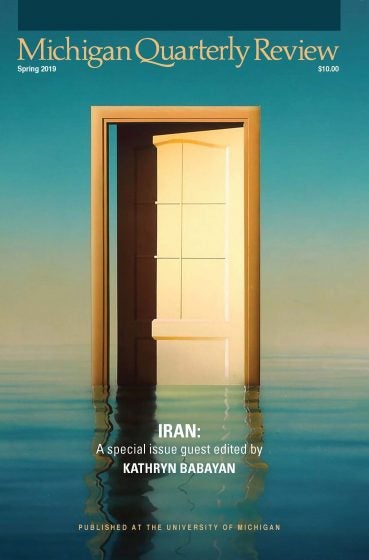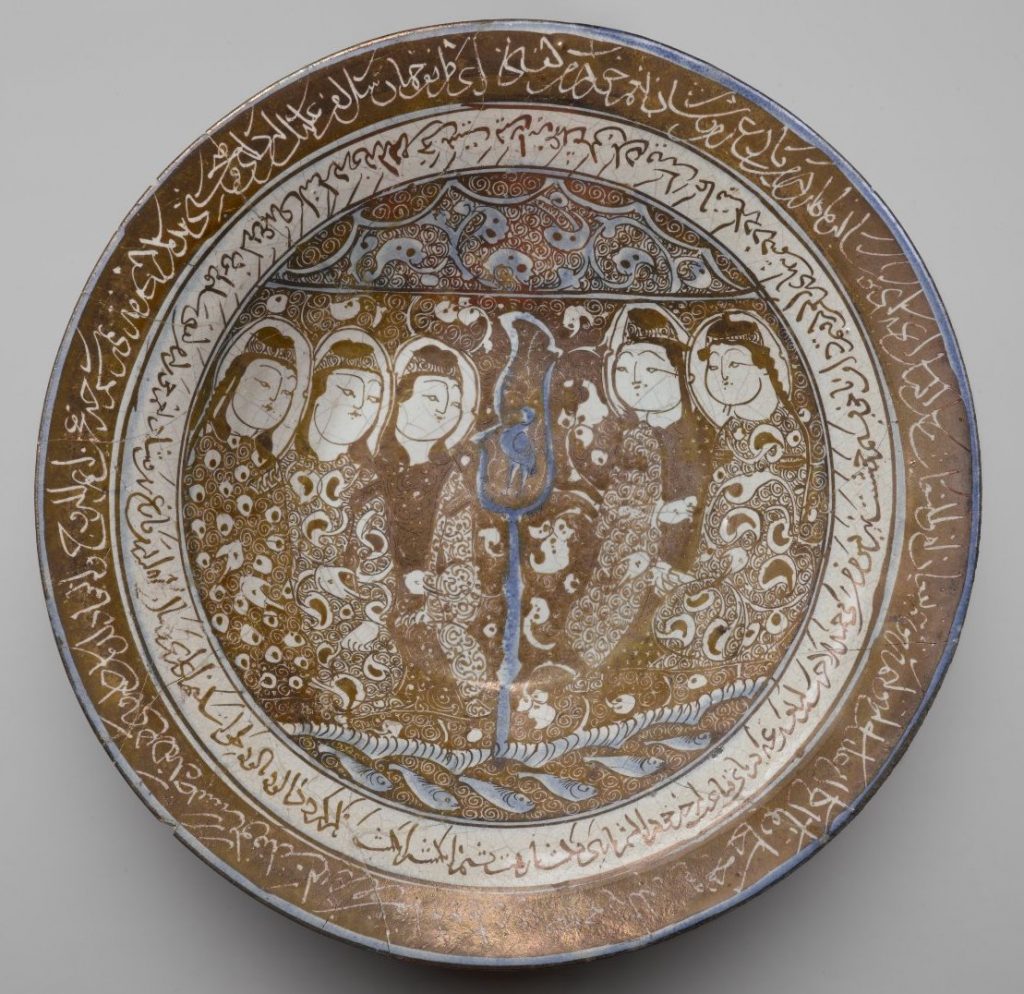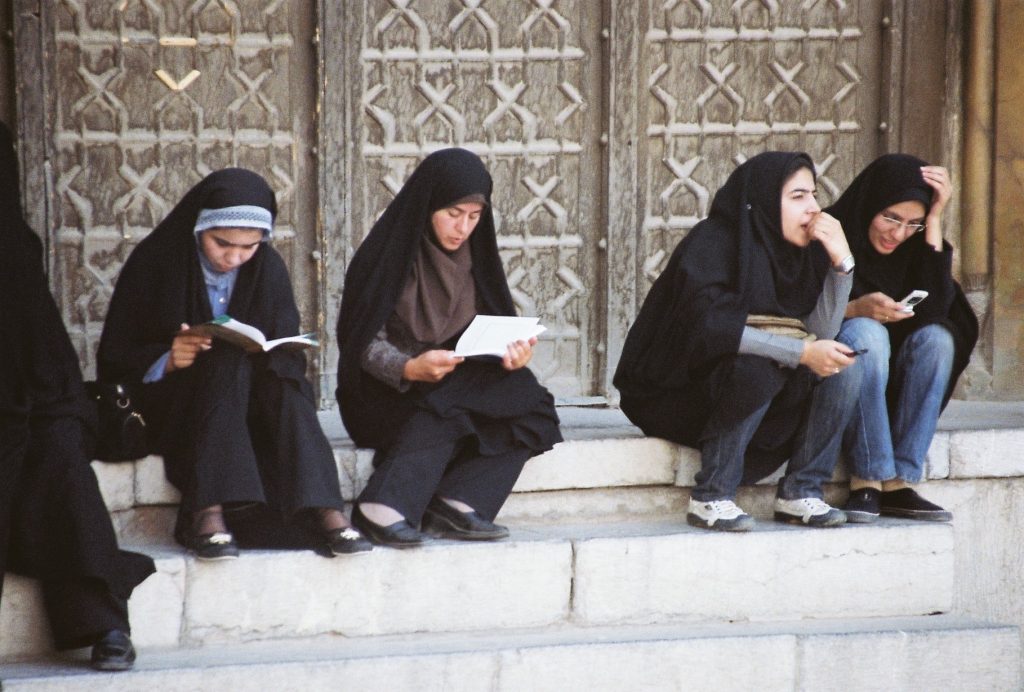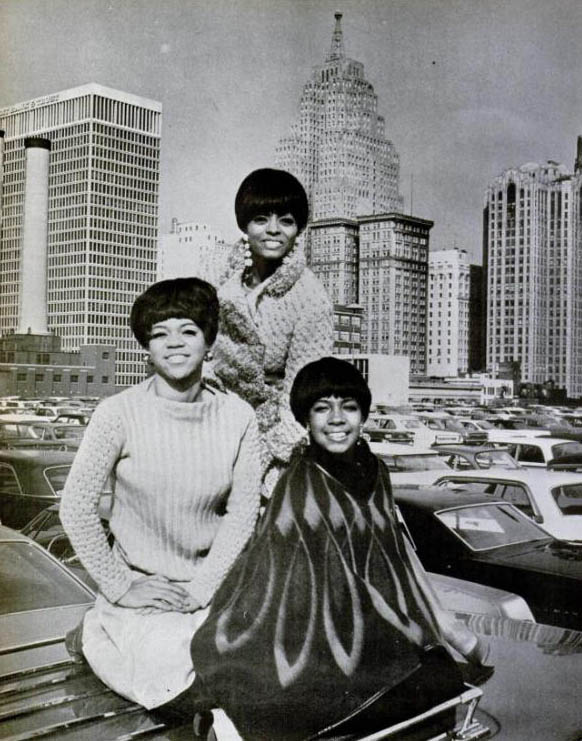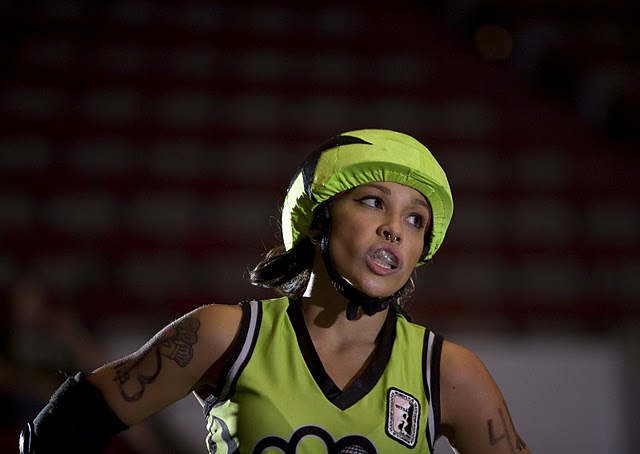There are public pools in Tehran, Shiraz, and Isfahan, no doubt elsewhere in Iran, too, but those are the cities I visited at the end of 2015. Before I left for Khomeini Airport, I had discovered the existence of a Jewish sports center in Tehran, a place to swim where my last name might gain me entrance. But I should have known better. In Syria, fifteen years earlier, my eastern European name signified nothing, never mind that I’d fail any impromptu test on the Torah or Jewish history.
There would be no tests. I wouldn’t even see the exterior of any sport and fitness complex in Tehran. A 2:00 a.m. arrival in the capital city, followed by a visit to the archeology museum eight hours later, then lunch and a tour of the treasury, capped by a late dinner of kabobs did not leave time to crash the local sports club. Early the following day I would leave Tehran for Kermanshah in a bus that would only make stops at places with ancient legacies. Among these places was Hamadan, where I inadvertently proved my qualifications for the Tehran pool when visiting the site identified as that of Esther and Mordecai’s tomb. As the resident rabbi retold the biblical story, I automatically rattled an invisible noisemaker when he mentioned Haman, as we did during the Purim services I was dragged to as a child.
My search for a pool had to wait until I arrived in Shiraz. As the bus looked for a place to park, I noticed a huge sign for a public sports center. It gaped open in an archway nearly opposite our destination, the Musalla Gardens, above which rises the celebrated tomb of the medieval poet Hafez. Unlike the many lovers who make the pilgrimage to this monument, Hafez traveled very little, and, it is thought, when he did, it was by necessity, to escape Shah Shuja’s displeasure. He was a poet who preferred to stay close to home writing love poems to a woman he would never meet.
The fifteenth-century tomb was built among surrounding pools centuries after his death. No one then or now comes to the park to swim. Couples visit for luck and love. They stand under the marble canopy and face the setting sun, west, the direction of the sports club, which cannot be seen beyond the formal gardens stretched below it. It was as curious an invisible prospect as ideal love. Who would be swimming now? Who would find transcendent love? The poet’s tomb and the click, click of cameras and incantatory poetry made anything seem possible. My own love was beside me—no kiss was stolen, tempted though I was. My bathing suit, goggles, and cap in the bus, also out of reach.
In Iran, kisses are private, like swimming. I would not find my way into any public or club pool here, though I would swim in Shiraz.
I had anticipated obstacles to swimming for a woman just passing through Iran. I had no expectations, but it was a goal. Swimming was my way of touching the ineffable, or trying to. Swimming had brought me as physically close to strangers as may be possible for a foreigner: in co-ed locker rooms in Paris, in one-room showers in Copenhagen where attendants made sure everyone soaped and rinsed; in a relay race with university students and faculty in Bulgaria. I interact with lifeguards more regularly than with my colleagues—complimented for seeming tireless, kept up to date on football scores, warned of coming squalls.
What a hotel pool offered would be so limited—just other Western tourists I assumed. It would not provide sea lion company as in the Gulf of Alaska or the opportunity to dispense with a bathing suit—the top half anyway—as in La Coruña. I wouldn’t mind not having to weave among children as in Dusseldorf’s public pool, not having to stay out of the race lanes at the University of Glasgow, or not having to get rejected at the entrance for lacking a health certificate in Moscow (circa 1989).
As a child I swam in a New York City hotel pool, the west side Sheraton, my mother’s idea of an affordable vacation: we lived fewer than fifteen miles from the hotel. A pool was special. We didn’t have one, nor did any of the area public schools I attended. We had been local tourists. I had forgotten there was such a thing, and my mother was not alive to remind me.
The Grand Hotel in Shiraz is quite an impressive high-rise structure on a hill, one with the unimagined luxury of separate, individual pools for each sex. Iran’s public pools as well as hotel pools typically have only one pool, with separate hours devoted to men and to women, at best halving the hours for women to swim. I was delighted to discover a pool where I wouldn’t be at the mercy of hours that typically served the needs and schedules of men.
The pools are on the hotel’s second floor, which I had difficulty locating, having tried to access it by the stairs. This hotel has two sets of elevators— one goes from registration at ground level to restaurants on the fourth floor. Another elevator on the fourth floor takes guests to their rooms. I decided to try to walk the two floors. How difficult could it be? Pretty challenging, as it happens: I ended up wandering the work area of the hotel on the third floor. I bumped into no one, seeing only huddled laundry bags against undecorated humid walls.
When I finally found the entrance to the women’s sports facility, I was met by a stocky woman with streaked auburn hair and a sleeveless tee shirt manning a large wooden reception desk. She had the look of an 80s college kid into punk. The ubiquity of women hidden behind hijab, scarves, chador, and knee-length outerwear, no matter how fashionable, can make seeing local women disencumbered of their public clothing disconcerting, if not shocking, even though I knew such garb is a requirement only in mixed company, that is, when men other than family are present. There were no men to hide from in the locker room.
I hadn’t discerned the changing rooms forming corner joints between the double rows of lockers. I had never been to a pool with private changing rooms, so I hadn’t looked for any. I had worn my suit under my clothes, which I stripped and left on the bench beside the curtained space I would notice only after I returned from the pool to change back into my modest “street” clothes.
After stripping to my suit, I found an elegant wooden spiral stairway leading down to the pool and signs forbidding the use of cell phone cameras. I hadn’t thought about taking pictures, but the signs forbidding me to do so made me think about a visual record. But even if I’d thought to bring a camera or my phone, I doubt I would have tried to sneak a shot under the watchful eyes of the staff who drifted in and out of the pool area. One of these women handed me a towel and pointed to the line of showers when she saw me walking around looking for one.
It was one of the more dramatic approaches to a pool in my experience. Not only the wide staircase circling down to the pool’s sparkling aquamarine, but the view of mountains and sky visible from the huge picture window. Natural light, evocative landscape, a rectangular pool of a decent size without a soul in it—an unimagined prospect.
I stopped mid-descent, first for the view, then to try to understand what I was seeing. It was a lovely pool, but from that height something seemed wrong with it. It appeared to have an underwater island in the middle that cut the rectangle into two squares. Since that configuration made no sense to me, I assumed it was an optical illusion created from my angle looking down onto the pool. Or, I hoped it was.
I put on my cap and goggles, the latter dimming my visual sense out of water, erasing the sharp edges of the central platform island. I half-jumped into the pool from the near end and felt instant disappointment: it was the warmest water I had ever been in, warmer than Utah’s Great Salt Lake in July, warmer than Florida’s Gulf of Mexico in August, warmer than any American pool adjusted to the standards set by the Arthritis Foundation. It was suffocating. Still, I was determined to swim.
I started by doing the crawl until I came to the edge of the island that was no illusion. But I didn’t stop. I simply switched strokes, from freestyle to breast stroke. I did this four times, back and forth, back and forth, until I sensed someone else moving in the pool. The heat, the island, and a water walker overcame the view, the light, and my will.
I wondered about the men’s pool. Was it warm? Did it have an island that impeded lap swimming? I don’t know. For all I knew pools were not intended for swimming. Perhaps they were luxury items indulging the whim of the rich who thought little of wasting such a precious resource in a semiarid climate. I felt a confluence of assumptions about women and sports and guests at high-end hotels.
I am adaptable: I’ll eat anything, wear anything, learn what I can of any language, Moteshakeram. The greatest cultural—and political—challenge to me was that swimming pool. I didn’t get it. And there was no one I could ask, no one I met who would even understand the question…
Purchase MQR 57:6 or consider a one-year subscription to read more. Sandy Feinstein’s essay, “Freestyle,” appears in the Spring 2019 Issue of MQR on Iran.
